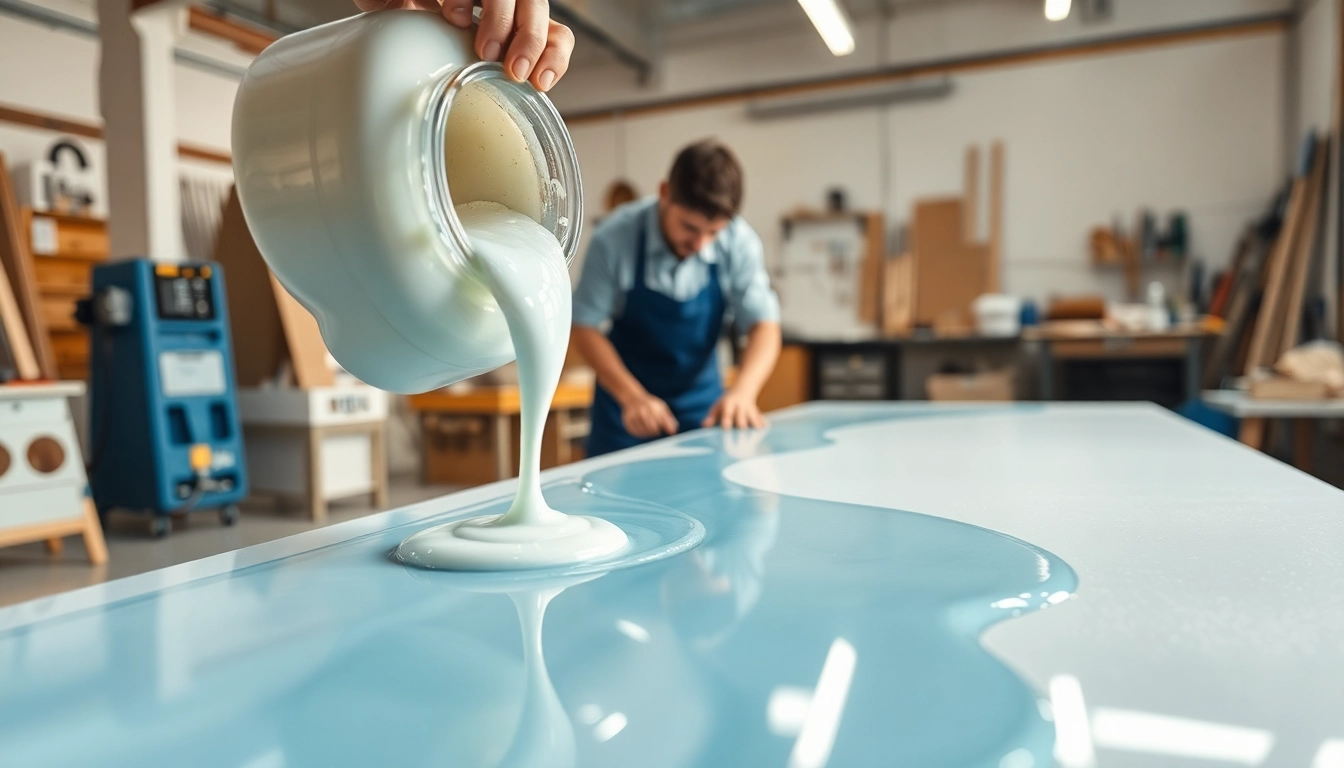Introduction to Laminating Resin
Laminating resins are essential materials in a variety of industries, playing a crucial role in the construction and manufacturing of composite products. From marine applications to the automotive industry, laminating resin provides the unique properties required to bond different materials while ensuring durability and longevity. This comprehensive guide will explore the intricacies of laminating resin, including its types, benefits, applications, and best practices for use.
What is Laminating Resin?
Laminating resin refers to a specific category of resin used primarily to create strong, rigid composite structures. It is commonly made from either epoxy or polyester, both known for their excellent adhesiveness and strength characteristics. The primary function of laminating resin is to saturate reinforcing materials, such as fiberglass or carbon fiber, allowing them to bond and form a solid laminate. This process enhances the structural integrity and mechanical properties of the composite, making laminating resin indispensable in numerous manufacturing processes.
Types of Laminating Resin
Understanding the different types of laminating resin is crucial for selecting the appropriate one for a specific application. The two main categories are:
- Polyester Laminating Resin: This type is typically favored for its cost-effectiveness and ease of use. Polyester laminating resin is particularly ideal for boat building and other marine applications due to its resistance to water and UV rays. It is also useful for low-cost mold fabrication, making it a popular choice among hobbyists and professionals alike.
- Epoxy Laminating Resin: Epoxy resins provide superior mechanical properties compared to polyester resins. They exhibit better adhesion, flexibility, and chemical resistance, making them suitable for high-performance applications, including aerospace and high-end automotive components. Although generally more expensive than polyester, the enduring properties of epoxy laminating resin often justify the investment.
Applications of Laminating Resin
Laminating resins find applications across multiple sectors, providing unique solutions to various challenges:
- Marine Industry: In yacht and boat construction, laminating resins are crucial for creating lightweight, yet strong hulls and surfaces that can endure harsh marine environments.
- Construction: Laminating resin is often used in the fabrication of structural components, including beams and panels, providing enhanced load-bearing capabilities.
- Aerospace: High-strength, lightweight composites made with laminating resins are essential in aerospace for producing aircraft wings and fuselage segments.
- Automotive: Manufacturers are increasingly using laminated composites for lightweight vehicle components to improve fuel efficiency while maintaining safety and performance standards.
Benefits of Using Laminating Resin
The advantages of utilizing laminating resin are manifold, contributing significantly to the quality and longevity of the final products. Some of the primary benefits include:
Strength and Durability
One of the key selling points of laminating resin is its ability to enhance the strength and durability of composite materials. When cured, laminating resin forms a bond that is resistant to environmental stressors, including heat, moisture, and chemicals. This characteristic makes it ideal for applications requiring high resilience.
Versatility in Projects
Laminating resins are versatile and can be utilized in various projects beyond traditional uses. They are ideal for creating artwork using fiberglass, forming molds for sculptures, or even reinforcing wooden furniture. Such flexibility allows creators to innovate and expand their project scope.
Cost-Effectiveness
When compared to other bonding materials, laminating resins provide an affordable option. The initial cost is often offset by the long-term durability and reduced need for repairs or replacements. Polyester laminating resins, in particular, are favored for budget-friendly projects without compromising on structural performance.
How to Choose the Right Laminating Resin
Selecting the appropriate laminating resin is essential to achieving satisfactory results. Several key factors should be considered during this process:
Consider Your Project Requirements
Identifying the specific requirements of your project will significantly influence your resin choice. Considerations include the desired strength, flexibility, curing time, and environmental conditions. If the application requires a high degree of resistance to chemicals or impacts, epoxy laminating resin might be the best choice. On the other hand, if cost is a limiting factor, polyester laminating resin may be adequate.
Evaluating Material Compatibility
It is crucial to evaluate the compatibility of the laminating resin with other materials utilized in your project. The interaction between the resin and reinforcing fibers or fillers can impact the final strengths. Always ensure that the resin is suitable for the type of reinforcement being used.
Understanding Curing Times
The curing time of laminating resin can vary significantly. Some applications may require quick-curing resins for faster project completion, while others may benefit from slower curing processes that allow for better air release and surface finishing. Understanding these variables ensures optimal results and workability.
Application Techniques for Laminating Resin
Once you have selected the appropriate laminating resin, mastering the application process is crucial to achieving the desired outcomes. Employing proper techniques can greatly enhance the finished product:
Step-by-Step Application Process
- Preparation: Ensure the surfaces that will be bonded are clean, dry, and free from contaminants. This preparation enhances adhesion.
- Mixing: When required, mix the resin and hardener according to the manufacturer’s instructions. A thorough mixture is vital for the desired curing process.
- Application: Use a brush, roller, or spray gun to apply a thin layer of resin onto the reinforcement material. Ensure even coverage to avoid air bubbles.
- Layering: If multiple layers are needed, repeat the application process, ensuring each layer is adequately cured before adding the next.
- Curing: Allow the laminate to cure fully according to the resin specifications, avoiding any disturbances during this period.
Common Mistakes to Avoid
In the application of laminating resin, common mistakes can lead to subpar results. Be on the lookout for:
- Insufficient surface preparation, leading to poor adhesion.
- Incorrect mixing ratios of resin and hardener, resulting in incomplete curing.
- Applying thick layers of resin that can trap air bubbles and impair the laminate’s integrity.
- Overworking the resin once applied, which can disrupt the curing process.
Best Practices for Optimal Results
To ensure the best possible outcome, follow these best practices:
- Always conduct a test patch before full application to assess compatibility and adhesion properties.
- Use proper ventilation when working with laminating resins, as fumes can be harmful.
- Consider the environmental conditions such as temperature and humidity, as these can impact curing times and resin performance.
- Document your mixing ratios and methods for future reference and consistency in your projects.
Maintenance and Safety with Laminating Resin
While working with laminating resin, maintaining safety and proper handling practices is critical for health and project integrity:
Handling and Storage Tips
Store laminating resin in a cool, dry place away from direct sunlight. Ensure that containers are sealed tightly to prevent contamination and premature curing. Always check the resin’s expiration date before use and adhere to proper disposal methods for unused materials.
Protective Equipment and Safety Measures
Safety should be a priority when working with laminating resins. Recommended protective equipment includes gloves, goggles, and respiratory masks to protect against fumes and skin contact. Additionally, work in a well-ventilated area to minimize inhalation of harmful vapors.
Disposal Guidelines for Laminating Resin
Dispose of laminating resin according to local regulations. Most areas have specific guidelines for disposing of hazardous materials. Always avoid pouring leftover resin down the drain or in regular trash; instead, check for local hazardous waste disposal programs.



